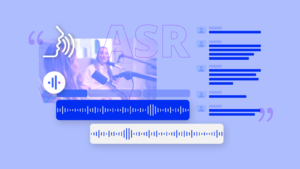Transcribing podcasts have become common practice for content creators looking to expand their reach and grow their audience size. With podcasts becoming increasingly popular in recent years, content creators are looking at different ways for their podcasts to stand out amongst millions of content. Here are 4 reasons why transcribing your podcasts will grow your audience and help you to get the most out of your existing content.
Reasons why transcribing podcasts can grow your audience
Increase Audience Engagement
Podcasts tend to be long-form content, and your audience may not have the time to listen to the whole podcast. Some people may prefer to read about the things you discuss in your podcast, or go straight to a particular subtopic they are more interested to learn about. Transcribing your podcasts allows your audience to read about what they want to know at their own pace. In this case, while your audience is not engaging with your whole podcast, it becomes more valuable as it gives your audience the takeaway they are looking for.
Reach A Wider Audience
When promoting your podcast, it is essential to consider what your audience is looking for. Audio alone may not cut it for many people, who may prefer to read about the things you discuss in your podcast.
Many podcasters have blogs, and cross post content on multiple platforms. Transcribing your podcasts facilitates the content creation process, as you’ll only need to spend time on repurposing content you have already prepared. This way, you can reach audience who are just as interested in your content, but do not have time to listen to a podcast.
With the text version of your podcast available, it also becomes more accessible for audiences who are not natives speakers and cannot catch on the audio to understand your content better.
Content For Social Platforms
Why let your podcast content go to waste when you can easily amplify them on multiple platforms in different mediums? There are several ways to use the transcribed content on your podcasts and other social media platforms. For instance, you can present them as notes on your website so your readers can scan them to get the gist of the topic discussed. You can also create infographics for Instagram and LinkedIn. This way you will be able to reach out to new audiences on these social media platforms who do not tune in to listen to the podcast.
Improve Your Podcasts’ Searchability
Search engines may not be able to index the audio but they will easily identify all the keywords from the transcription. The search bots are not likely to listen to the audio but they will be sure to read through the transcription. If there are lots of keywords in the podcast, that will help you boost your SEO.
Reshared To New Audiences
You can also create different blog posts and articles on your own websites or other platforms. This will help generate more significant traffic, and you can get more audience for your podcast. If you need something for your social media strategy, then you can also make use of the transcriptions as snippets on other websites or use them as guest posts.
How To Transcribe Your Podcast
If you want to transcribe your podcast, you can use platforms such as Auris AI. It is an online transcription tool that will help you convert all your audio to text. The highly accurate AI technology can transcribe the audio in real-time, and you can use it for multiple purposes, such as adding subtitles to a video or generating text that can be used elsewhere.
The best part of this transcribing tool is that it allows you to first convert the audio to text, and then you can simply edit it as if you are editing a word document. Moreover, you can choose from any language you want, even if you are from Asia!
Using Auris AI is a great way to get your podcast’s content and publish it on your website or social media platforms. You can target audiences who do not listen to podcasts but read blogs or visit social media platforms. This way, you will not be closing doors to your content to individuals who are not too fond of podcasts.






